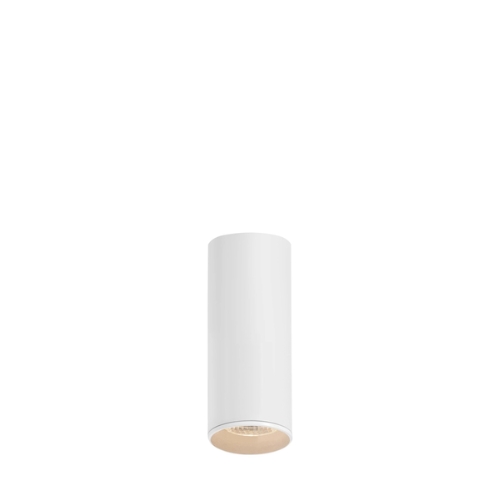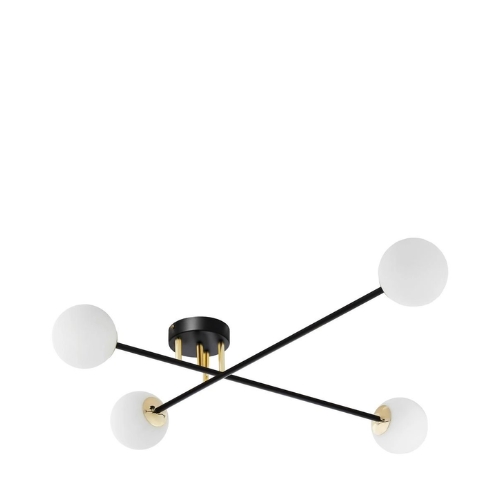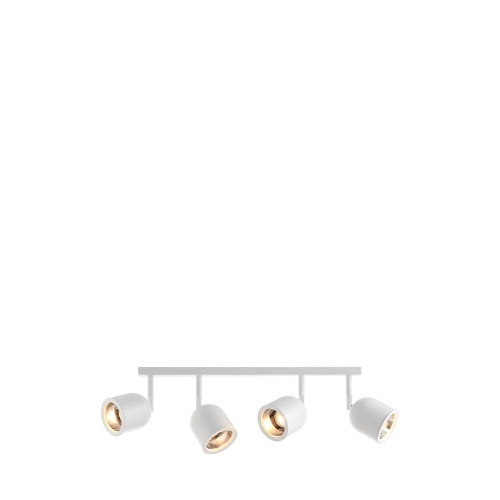How to light a small room?

How to light a small room? Plan it well!
Planning to light a small room? It is good that you are! Below you will find the basic principles to follow when planning and selecting light fixtures for small spaces, as well as suggestions for specific lamps that are perfect for small spaces. We also have some tricks for you to make your room seem bigger and taller, and you will enjoy spending your free time in it.
Carefully plan lighting in a small interior
When planning the lighting of a small room, you need to keep in mind four main principles:
- Light up every corner of the room - Plan the lighting of a small room to illuminate all its nooks and crannies. One lamp may be enough to provide enough light, but it certainly won't be a good solution if you want to optically enlarge the space and look striking.
- Remember layered lighting - one of the main principles of interior lighting is the principle of layered lighting, present at all "heights" of the room. In practice, this means that ceiling lighting should be accompanied by sconces as well as floor or table lamps. By sticking to this principle - including when planning the lighting of a small room - you will not only perfectly illuminate the interior, but also highlight its design and create the right atmosphere at any time of the day or night.
- Consider all types of lighting at the design stage - When designing the lighting of a small interior, also remember that the lamps you choose should fulfill three basic roles of lighting - general lighting, spot lighting and task lighting (serving a practical purpose and consistent with the functionality of the room). After determining the number and type of lamps, design the installation accordingly (outlets, switches, etc.)
- Bet on the right lamps - When choosing specific light fixtures, pay attention that they do not overwhelm the interior with their size, and their shades or lampshades, do not "take away" too much light. We write about what lamps work best in small rooms below.
What lamps to choose for a small room?
If you already know what kind of lighting you need and where it will be present in your interior, it's time to choose specific lamps and fixtures. Below you will find tips and some specific examples of lamps that will shine most beautifully in small interiors, as well as additional tips for decorating small spaces.
- Ceiling lamp or plafond. Forgo large pendant lamps or heavy chandeliers, which tend to overwhelm the space, in favor of elegant ceiling lamps or classic or modern plafonds. These lamps do not take up much space in the interior and add lightness to it. A great example of a ceiling lamp - quite versatile and suitable for both classic and modern arrangements - is the lamp Astra, available with either 4 or 6 spherical lampshades. This lamp is not only low, but also, thanks to its interesting asymmetrically arranged arms, quite spread out, which makes it perfectly illuminate the entire room. If you are looking for something more modern and neutral, choose plafond that will blend in with the interior design.
- Lamps with a transparent shade. When choosing a lamp for a small interior, it is worth betting on designs with shades made of transparent glass. They do not visually reduce the space, add lightness to it, and at the same time distribute light very well. An example of such a lamp can be slightly extravagant modern Avia lamp, be the more classic Alur lamp, available in both gold and black finishes.
- Minimalist lamps. Lamps with a minimalist character, with simple shades also in the form of ceiling strips with directional spotlights, also work well in small rooms.
- Wall lamps. When choosing wall lamps for small rooms, bet on those emitting light both upward and downward simultaneously. This kind of lighting will build the atmosphere, but also make the room seem taller and larger.
- Side lighting. In addition to the central lamp, introduce side lighting into the interior, either in the form of additional small pendant lamps (placed, for example, above the coffee table or on either side of the bed). In this role, small, but how impressive Lamia lamps will work perfectly) and also table lamps - preferably with a transparent shade.
- Avoid lamps that cast light downward. When choosing lamps for a small room, also remember to avoid fixtures that cast light downward. Such lamps often cast a shadow on the ceiling, which in turn makes the room appear smaller. Therefore, it is worth choosing lamps with transparent or spherical shades that evenly distribute the light, as well as fixtures that direct the light both upward and downward.
- Place floor or table lamps in the corners of the room. Use floor or table lamps to illuminate the farthest corners of the room. Choose table lamps with open lampshades, preferably made of glossy, shiny materials (such as lora lamp), whose brilliance will help you make better use of natural light (we write more about this below).
Small interior and natural light
In decorating a small room and planning its lighting, it is also worth considering how to make the best use of natural daylight, which, especially in the winter and autumn days and months, is at a premium. After all, sunlight makes us feel better, have a good mood, we are less sleepy, so especially in a room with windows facing north or east, it is worth taking care of its best possible exposure. To this end, dispense with heavy curtains or wide blinds, and solve any problems with excessive sun exposure during the summer periods with special window films or blinds, which in autumn or winter you will be able to roll up to maximize window exposure.
- Our advice: When choosing light bulbs for your home, remember to choose those that best mimic natural light. The factor to pay attention to is the color rendering index Ra (CRI). The higher the Ra (its maximum value is 100), the better the quality of artificial lighting and the closer it is to natural light. In residential lighting, it is recommended to use incandescent bulbs with a color rendering index of at least 80. However, when it comes to the color temperature of the light, it is important to remember that the light that is closest to natural light (also called neutral light), emits incandescent bulbs with a value of about 4000K. This light stimulates and motivates to action, so if you rather care about a cozy atmosphere in the interior, choose bulbs with a warm color - under 3500K. Read more about the key parameters of light in our article HERE.
Remember the "brightening" accessories
The right colors, accessories and materials will also help you light and illuminate a small room. You will get the effect of more light in the interior, for example, by introducing mirrors, mirrored furniture and glass accessories into the room. Another way to brighten up an interior is to use glossy or shiny fronts, fabrics, wallpaper, etc. Remember that matte surfaces absorb light so try to avoid them in small rooms, unless you want an intimate, "dark" effect. The color of the walls and ceiling is also not insignificant. White and bright colors will certainly help you to "bring out" even more light from your interior.
We hope that after reading this article you already know how to effectively and efficiently illuminate a small room. If, on the other hand, you measure yourself against the lighting of a low room, read our short guide HERE and see how much you can do with light!


